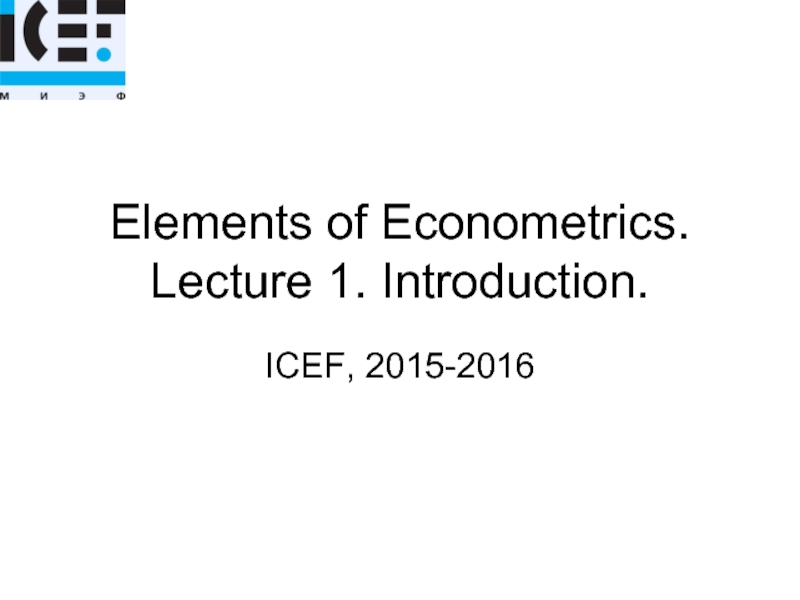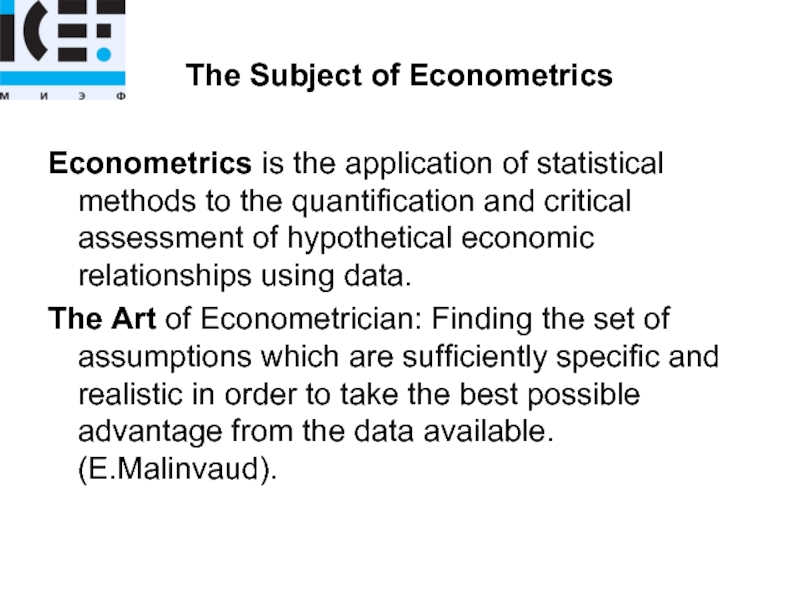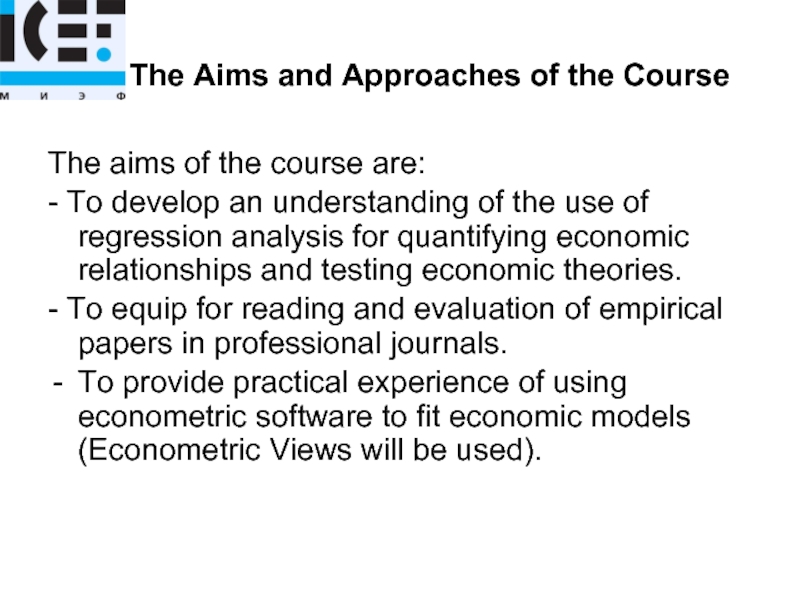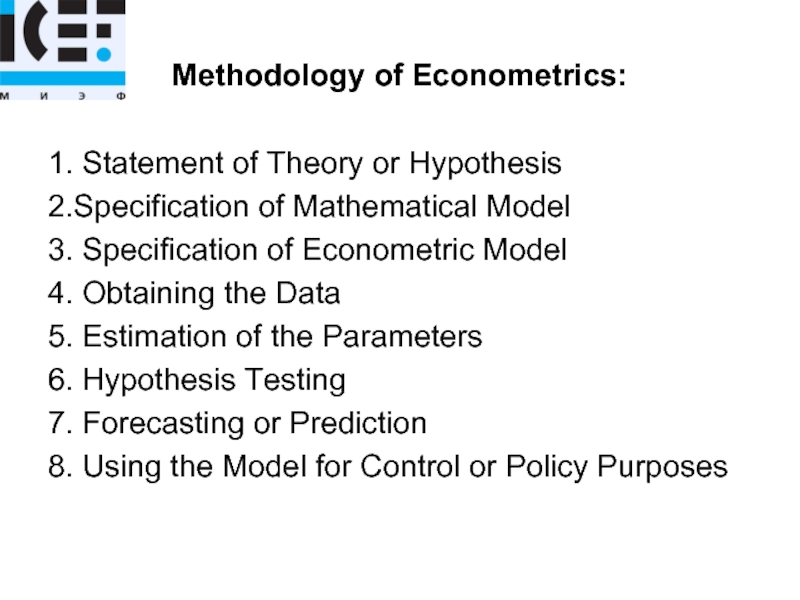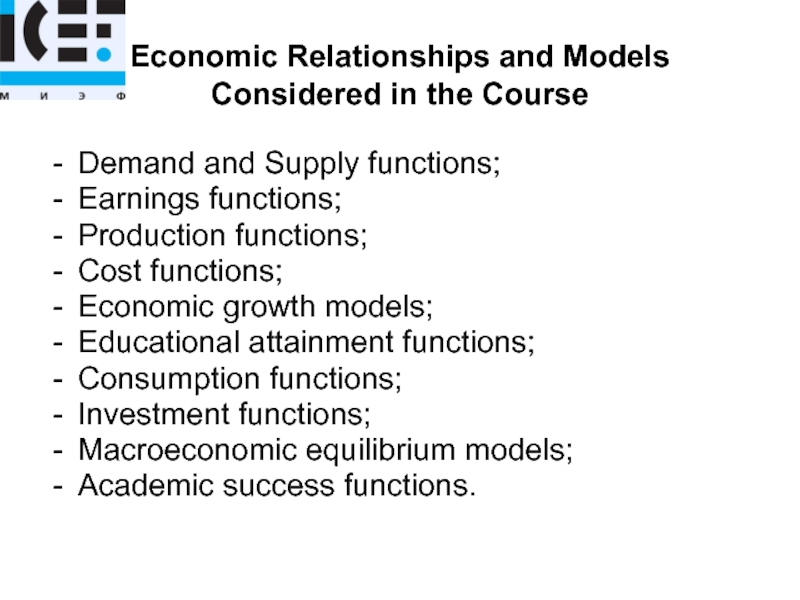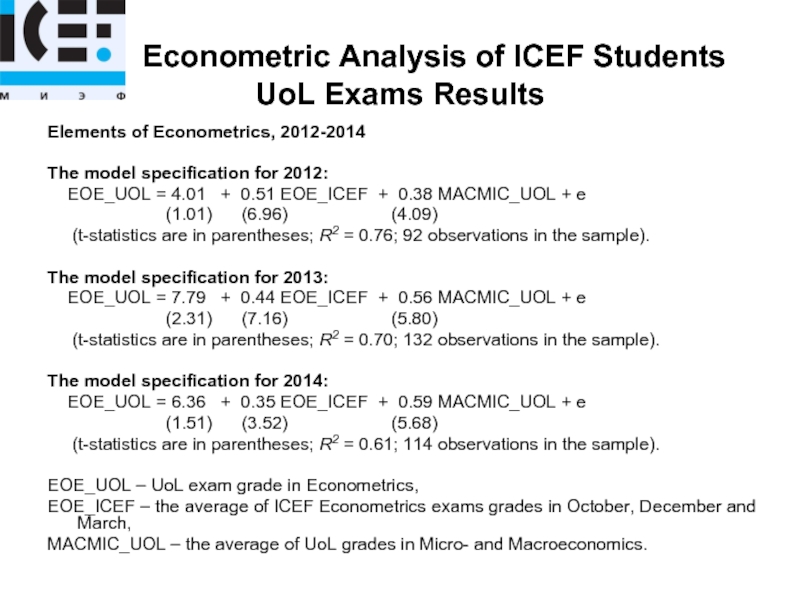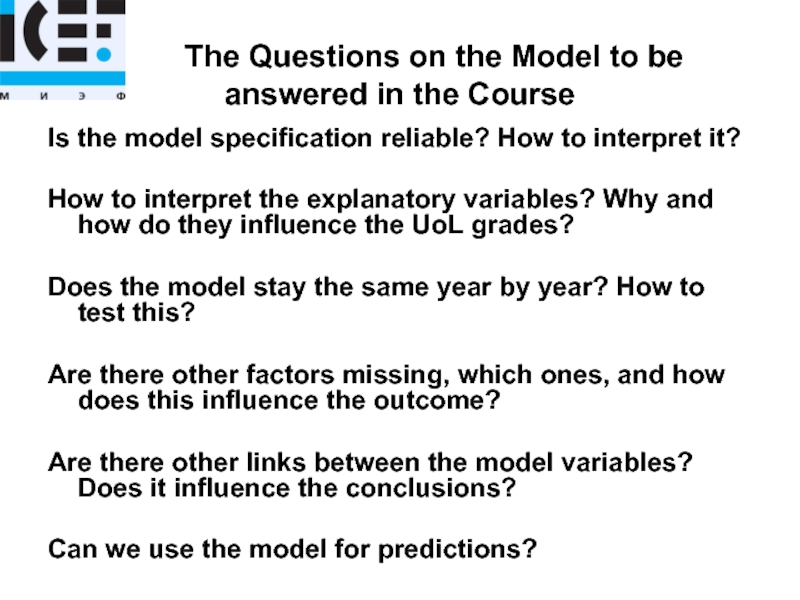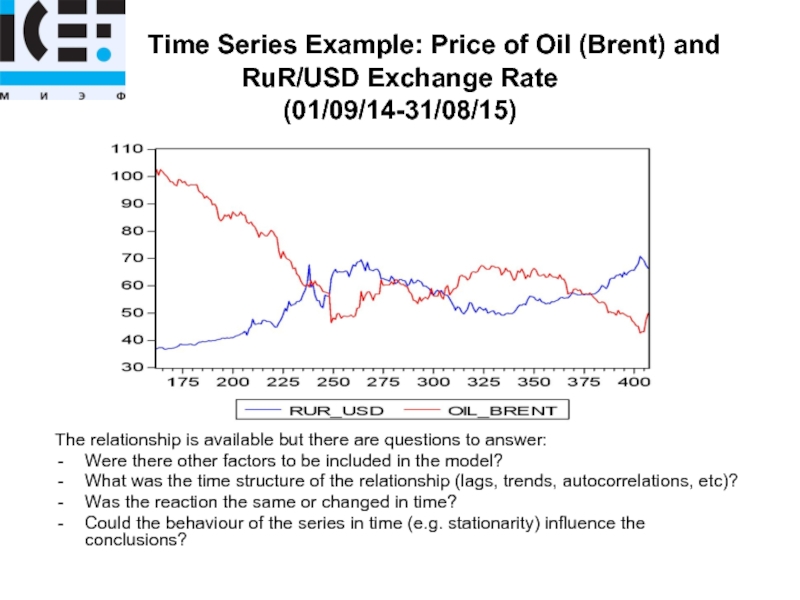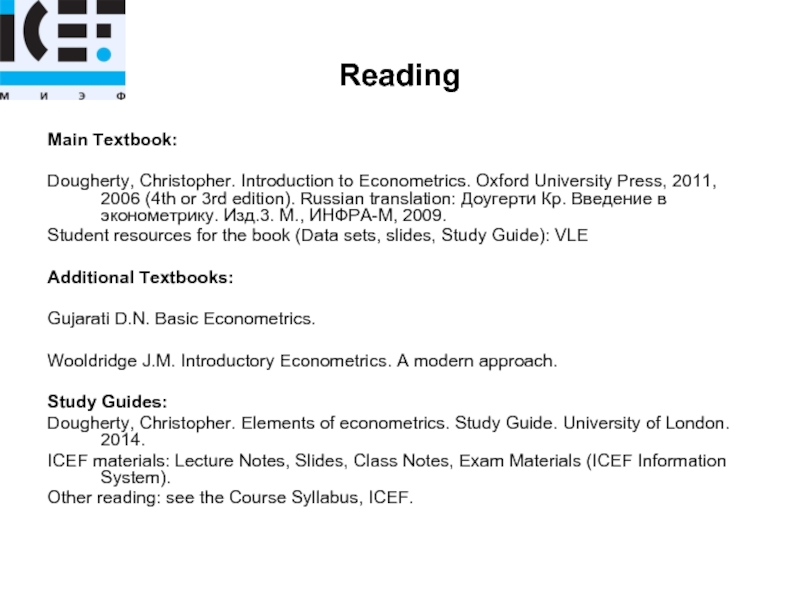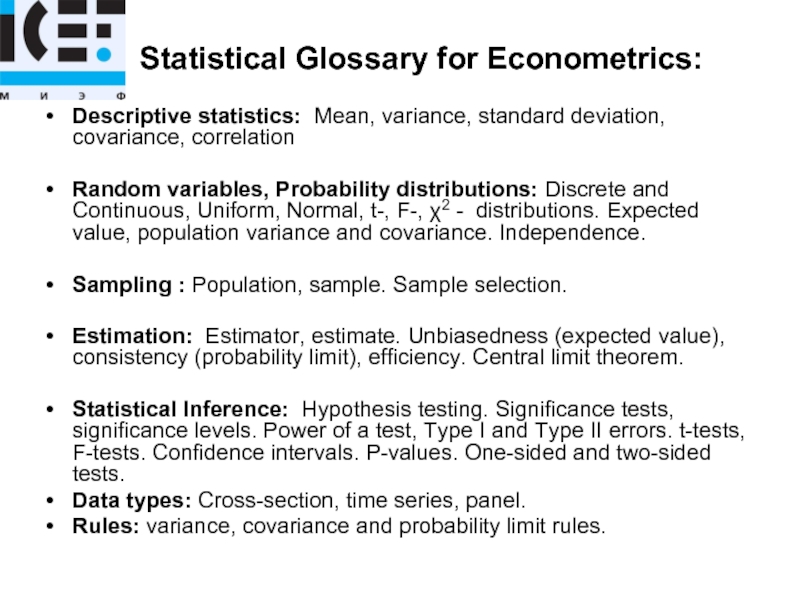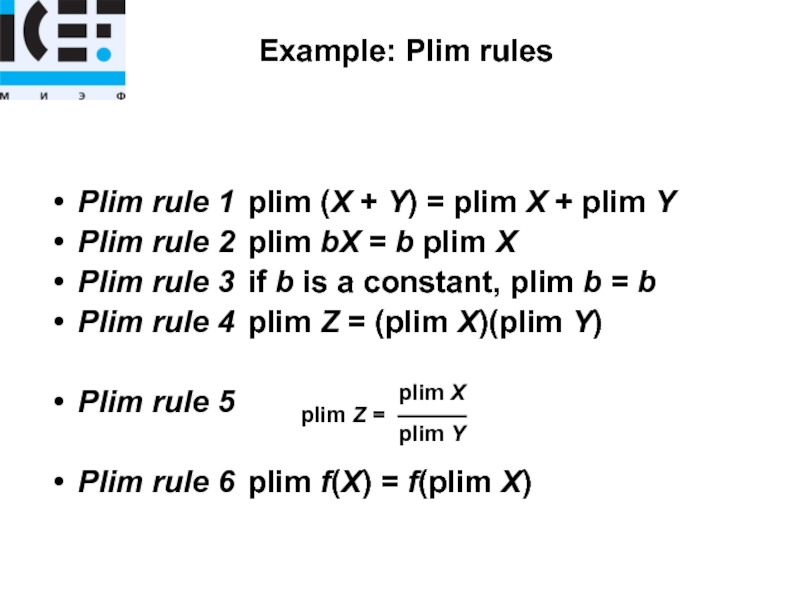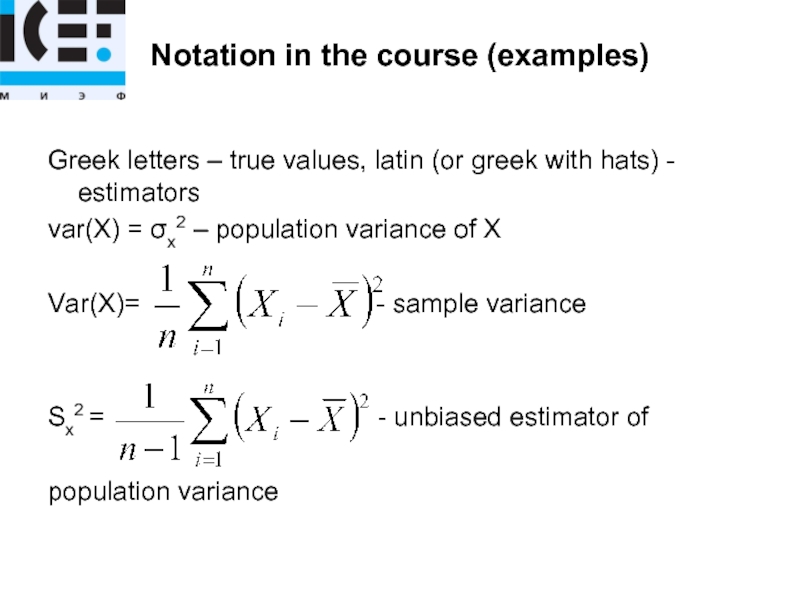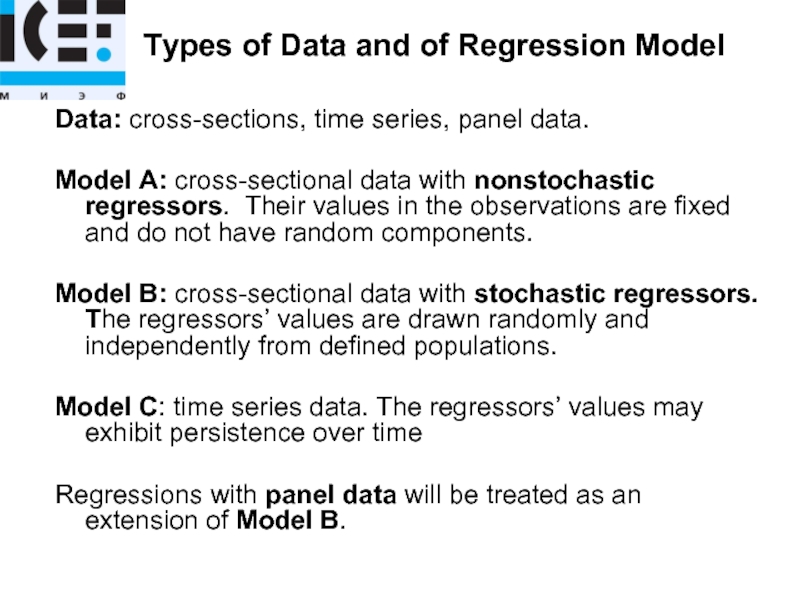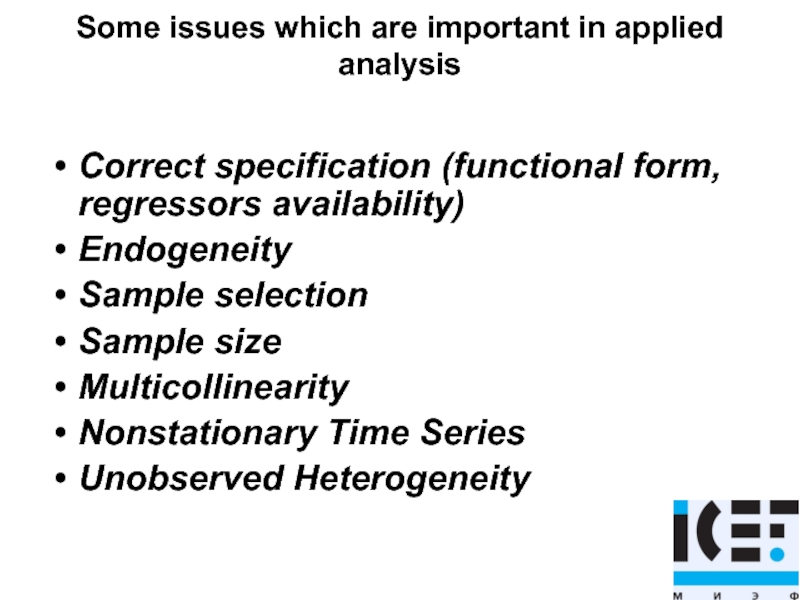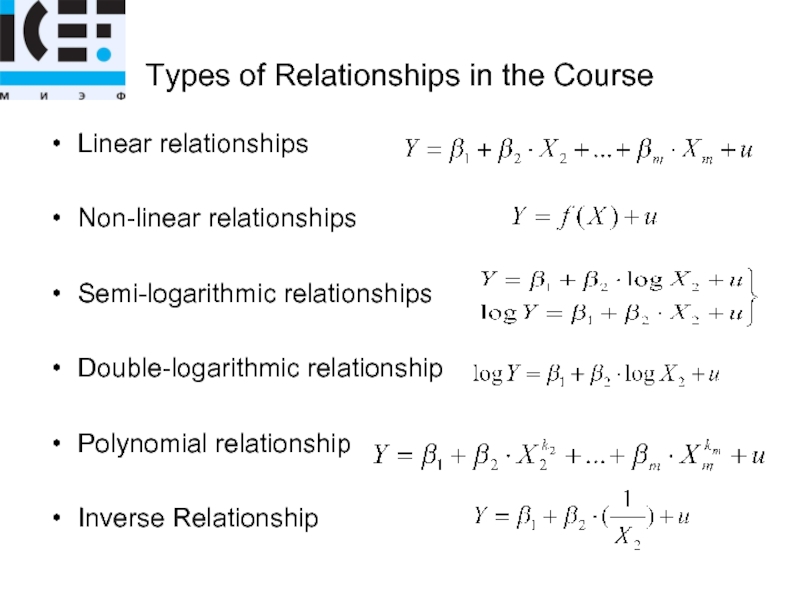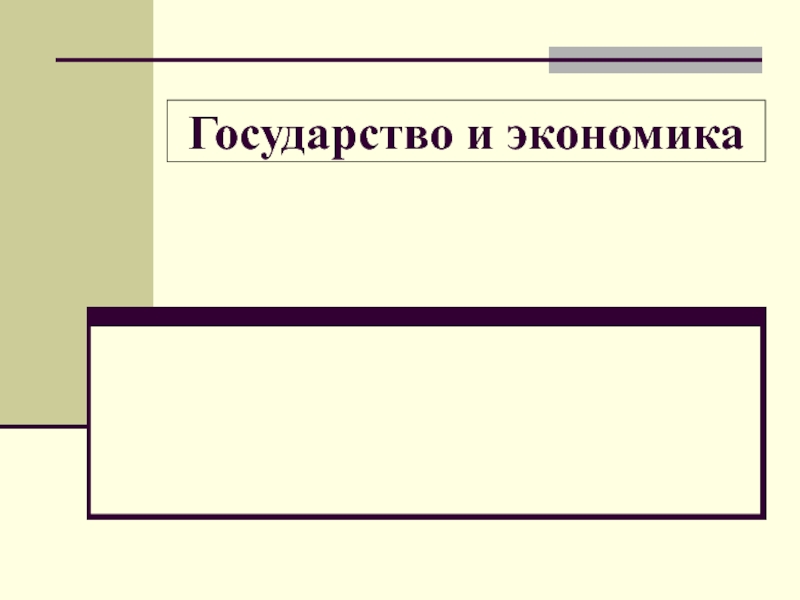- Главная
- Разное
- Дизайн
- Бизнес и предпринимательство
- Аналитика
- Образование
- Развлечения
- Красота и здоровье
- Финансы
- Государство
- Путешествия
- Спорт
- Недвижимость
- Армия
- Графика
- Культурология
- Еда и кулинария
- Лингвистика
- Английский язык
- Астрономия
- Алгебра
- Биология
- География
- Детские презентации
- Информатика
- История
- Литература
- Маркетинг
- Математика
- Медицина
- Менеджмент
- Музыка
- МХК
- Немецкий язык
- ОБЖ
- Обществознание
- Окружающий мир
- Педагогика
- Русский язык
- Технология
- Физика
- Философия
- Химия
- Шаблоны, картинки для презентаций
- Экология
- Экономика
- Юриспруденция
Lecture 1. Introduction to Econometrics презентация
Содержание
- 1. Lecture 1. Introduction to Econometrics
- 2. The Subject of Econometrics Econometrics is the
- 3. The Aims and
- 4. Methodology of Econometrics: 1. Statement of Theory
- 5. Economic Relationships and Models Considered in the
- 6. Econometric Analysis of
- 7. The Questions on
- 8. Time Series Example:
- 9. Reading Main Textbook: Dougherty,
- 10. Main Electronic Resources: ICEF Information
- 11. Statistical Glossary for Econometrics:
- 12. Example: Plim rules Plim
- 13. Notation in the course (examples) Greek letters
- 14. Types of Data
- 15. Some issues which are important in applied
- 16. Types of Relationships in the Course Linear
Слайд 2The Subject of Econometrics
Econometrics is the application of statistical methods to
The Art of Econometrician: Finding the set of assumptions which are sufficiently specific and realistic in order to take the best possible advantage from the data available. (E.Malinvaud).
Слайд 3 The Aims and Approaches of the Course
The
- To develop an understanding of the use of regression analysis for quantifying economic relationships and testing economic theories.
- To equip for reading and evaluation of empirical papers in professional journals.
To provide practical experience of using econometric software to fit economic models (Econometric Views will be used).
Слайд 4Methodology of Econometrics:
1. Statement of Theory or Hypothesis
2.Specification of Mathematical Model
3.
4. Obtaining the Data
5. Estimation of the Parameters
6. Hypothesis Testing
7. Forecasting or Prediction
8. Using the Model for Control or Policy Purposes
Слайд 5Economic Relationships and Models Considered in the Course
Demand and Supply functions;
Earnings
Production functions;
Cost functions;
Economic growth models;
Educational attainment functions;
Consumption functions;
Investment functions;
Macroeconomic equilibrium models;
Academic success functions.
Слайд 6 Econometric Analysis of ICEF Students UoL Exams
Elements of Econometrics, 2012-2014
The model specification for 2012:
EOE_UOL = 4.01 + 0.51 EOE_ICEF + 0.38 MACMIC_UOL + e
(1.01) (6.96) (4.09)
(t-statistics are in parentheses; R2 = 0.76; 92 observations in the sample).
The model specification for 2013:
EOE_UOL = 7.79 + 0.44 EOE_ICEF + 0.56 MACMIC_UOL + e
(2.31) (7.16) (5.80)
(t-statistics are in parentheses; R2 = 0.70; 132 observations in the sample).
The model specification for 2014:
EOE_UOL = 6.36 + 0.35 EOE_ICEF + 0.59 MACMIC_UOL + e
(1.51) (3.52) (5.68)
(t-statistics are in parentheses; R2 = 0.61; 114 observations in the sample).
EOE_UOL – UoL exam grade in Econometrics,
EOE_ICEF – the average of ICEF Econometrics exams grades in October, December and March,
MACMIC_UOL – the average of UoL grades in Micro- and Macroeconomics.
Слайд 7 The Questions on the Model to be
Is the model specification reliable? How to interpret it?
How to interpret the explanatory variables? Why and how do they influence the UoL grades?
Does the model stay the same year by year? How to test this?
Are there other factors missing, which ones, and how does this influence the outcome?
Are there other links between the model variables? Does it influence the conclusions?
Can we use the model for predictions?
Слайд 8 Time Series Example: Price of Oil (Brent)
The relationship is available but there are questions to answer:
Were there other factors to be included in the model?
What was the time structure of the relationship (lags, trends, autocorrelations, etc)?
Was the reaction the same or changed in time?
Could the behaviour of the series in time (e.g. stationarity) influence the conclusions?
Слайд 9Reading
Main Textbook:
Dougherty, Christopher. Introduction to Econometrics. Oxford University Press, 2011,
Student resources for the book (Data sets, slides, Study Guide): VLE
Additional Textbooks:
Gujarati D.N. Basic Econometrics.
Wooldridge J.M. Introductory Econometrics. A modern approach.
Study Guides:
Dougherty, Christopher. Elements of econometrics. Study Guide. University of London. 2014.
ICEF materials: Lecture Notes, Slides, Class Notes, Exam Materials (ICEF Information System).
Other reading: see the Course Syllabus, ICEF.
Слайд 10Main Electronic Resources:
ICEF Information System: http://icef-info.hse.ru
University of London site: http://www.londoninternational.ac.uk/community/students
VLE
Oxford University Press: www.oup.com/uk/orc/bin/9780199567089
http://crow.academy.ru/econometrics - many useful materials
ICEF Computer Classes (desktops): «Хрестоматия по Эконометрике»
Слайд 11 Statistical Glossary for Econometrics:
Descriptive statistics: Mean, variance, standard
Random variables, Probability distributions: Discrete and Continuous, Uniform, Normal, t-, F-, χ2 - distributions. Expected value, population variance and covariance. Independence.
Sampling : Population, sample. Sample selection.
Estimation: Estimator, estimate. Unbiasedness (expected value), consistency (probability limit), efficiency. Central limit theorem.
Statistical Inference: Hypothesis testing. Significance tests, significance levels. Power of a test, Type I and Type II errors. t-tests, F-tests. Confidence intervals. P-values. One-sided and two-sided tests.
Data types: Cross-section, time series, panel.
Rules: variance, covariance and probability limit rules.
Слайд 12 Example: Plim rules
Plim rule 1 plim (X + Y) = plim
Plim rule 2 plim bX = b plim X
Plim rule 3 if b is a constant, plim b = b
Plim rule 4 plim Z = (plim X)(plim Y)
Plim rule 5
Plim rule 6 plim f(X) = f(plim X)
Слайд 13Notation in the course (examples)
Greek letters – true values, latin (or
var(X) = σx2 – population variance of X
Var(X)= - sample variance
Sx2 = - unbiased estimator of
population variance
Слайд 14 Types of Data and of Regression Model
Data:
Model A: cross-sectional data with nonstochastic regressors. Their values in the observations are fixed and do not have random components.
Model B: cross-sectional data with stochastic regressors. The regressors’ values are drawn randomly and independently from defined populations.
Model C: time series data. The regressors’ values may exhibit persistence over time
Regressions with panel data will be treated as an extension of Model B.
Слайд 15Some issues which are important in applied analysis
Correct specification (functional form,
Endogeneity
Sample selection
Sample size
Multicollinearity
Nonstationary Time Series
Unobserved Heterogeneity
Слайд 16Types of Relationships in the Course
Linear relationships
Non-linear relationships
Semi-logarithmic relationships
Double-logarithmic relationship
Polynomial relationship
Inverse
